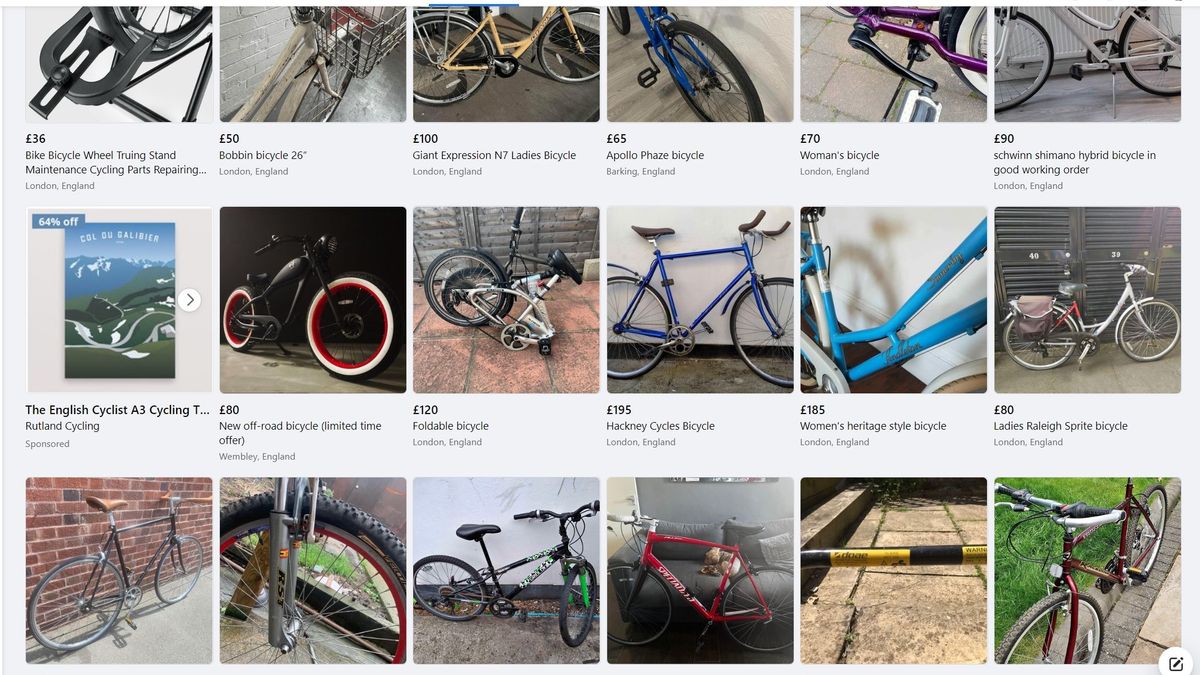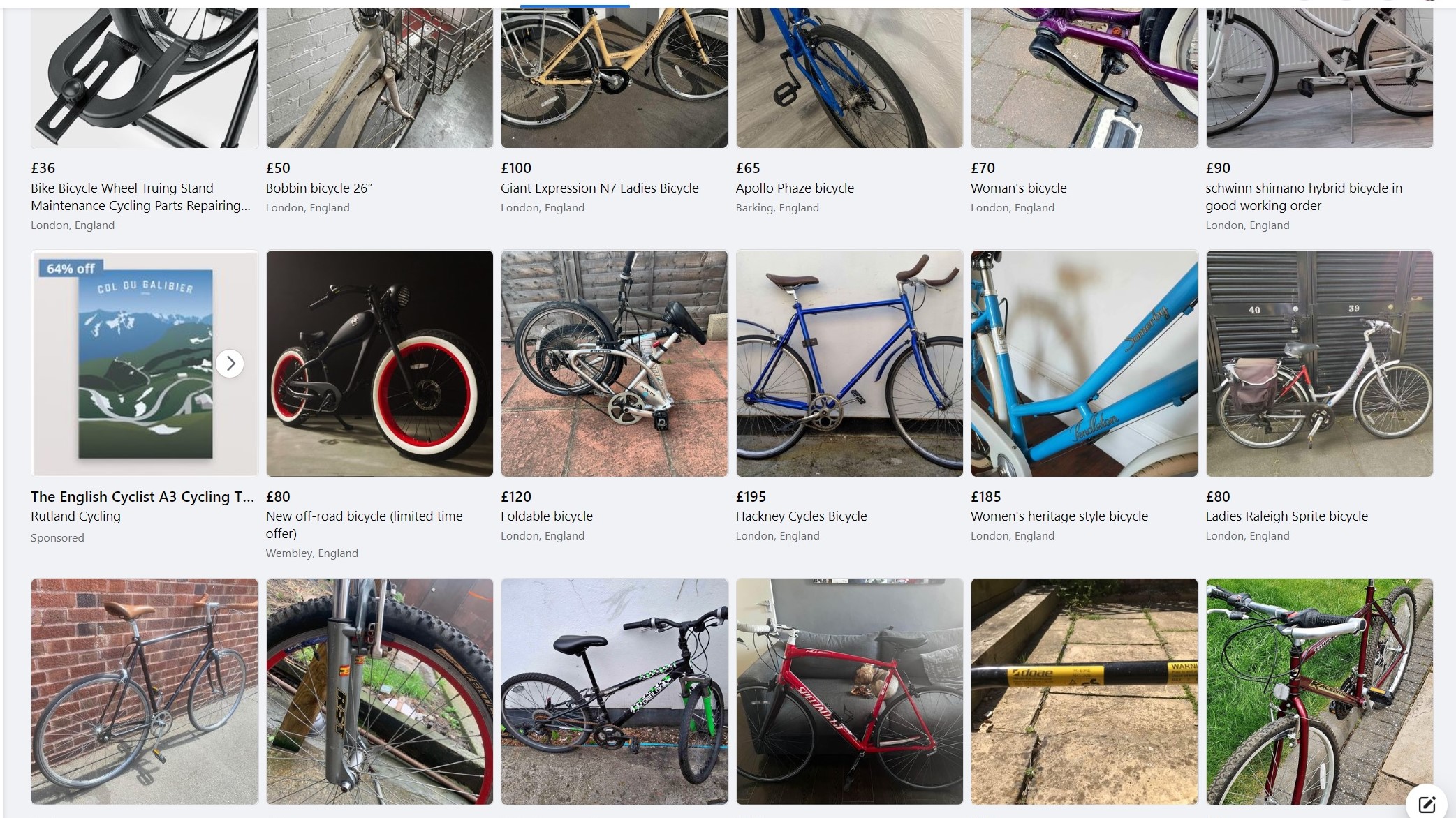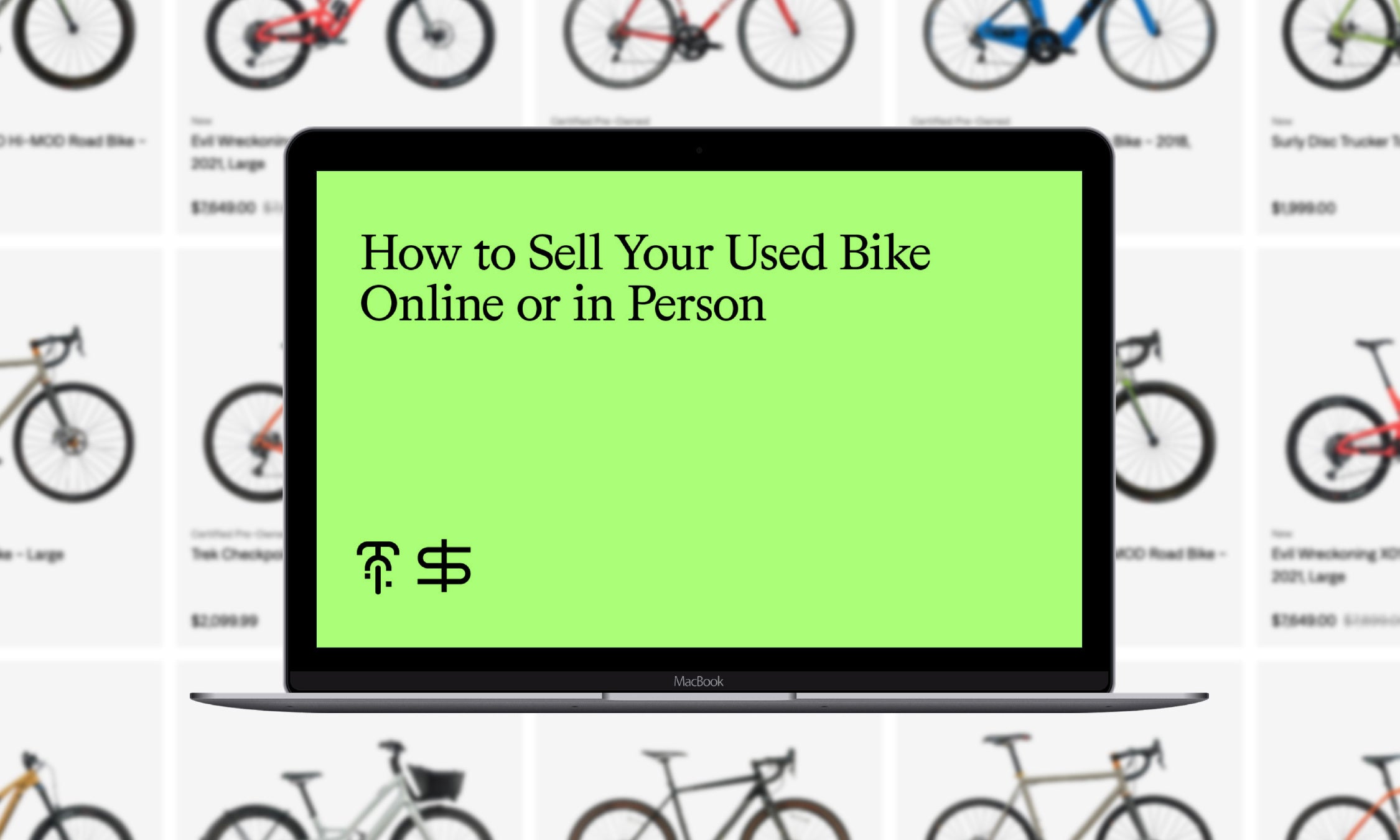Are you looking to sell your used bicycle but aren’t sure where to start? You’re not alone.
Many people find themselves with a bike that’s no longer needed, whether due to an upgrade, a change in lifestyle, or simply because it’s been sitting unused for too long. The good news is that selling your used bicycle can be a straightforward and rewarding process if done correctly.
Imagine clearing up space in your garage while putting some extra cash in your pocket. It’s a win-win! This guide will walk you through the steps to ensure your bike sells quickly and at a great price. From preparing your bike for sale to choosing the best platform, we’ve got you covered. Stay tuned, because by the end of this article, you’ll know exactly how to sell a used bicycle and how to make your bicycle irresistible to buyers.
Table of Contents
Market Research
Selling a used bicycle involves understanding the local market and setting a fair price. Research popular platforms for listings and gather details on similar bikes. Highlight the bicycle’s best features to attract buyers.
Selling a used bicycle requires more than just listing and waiting for buyers. Understanding your market is crucial to making a successful sale. Market research helps you position your bike at the right price and find potential buyers effectively.
Analyze Local Demand
Knowing your area’s demand for used bicycles can make all the difference. Are there many cyclists in your town? Do you live near a college or university where students need affordable transportation? There’s likely a higher demand for bikes if you live in a city with a strong biking culture. Remember how the crowd responded if you once sold a bike at a local market. Were people interested in road bikes or mountain bikes? Such insights guide you on what type of bicycle might sell well locally. Consider conducting a quick survey among friends or local cycling groups to gauge interest. What are people looking for in a used bike? Understanding these preferences can help you target the right audience.
Check Online Listings
Online platforms are a goldmine for insights into pricing and demand trends. Sites like Craigslist, Facebook Marketplace, and eBay show what bikes are selling and at what price. Look for bicycles similar to yours and note their condition, price, and how long they’ve been listed. Have you ever scrolled through listings and noticed a pattern? Some bikes sell fast while others linger. This tells you which models are popular and what prices are reasonable. Don’t just look at the prices—pay attention to the language used in successful listings. Are sellers highlighting specific features or using persuasive language? You can learn a lot from these listings about what attracts buyers. You set yourself up for a successful bike sale by analyzing local demand and checking online listings. What insights have you gained from your market research?
Prepare The Bicycle
Get your bike ready to sell by cleaning it thoroughly. Ensure all parts are working smoothly. Fix any minor issues to make it appealing to buyers. A clean, well-maintained bicycle attracts more interest and can sell faster.
Preparing your bicycle before selling is crucial to attract potential buyers and fetch a good price. A well-prepared bicycle looks appealing and assures the buyer of its functionality. Let’s explore the steps you should take to prepare your bike for sale.
Clean Thoroughly
Start with a thorough cleaning. A sparkling bike instantly catches the eye. Use a gentle soap and water solution to remove dirt and grime. Don’t forget to clean the drivetrain, which includes the chain, gears, and derailleurs. A clean drivetrain not only looks better but also functions more smoothly. Pay attention to those hard-to-reach spots. Areas around the brakes and the bottom bracket often accumulate hidden dirt.
Inspect For Repairs
Inspect your bike for any repairs it might need. Check the tires for wear and tear. Inflate them to the correct pressure and ensure there are no punctures. Look over the brake pads. If they’re worn down, replace them. Effective brakes are a major selling point for safety-conscious buyers. Assess the frame for any damage. A small dent might not seem like much, but it can significantly lower the bike’s value.
Tune-up Essentials
A basic tune-up can make your bike ride like new. Adjust the gears so they shift smoothly. Misaligned gears can be a deal-breaker for many buyers. Ensure the brakes are responsive and the cables aren’t frayed. Tighten any loose bolts to avoid rattling noises during a test ride. Consider lubricating the chain. It reduces friction and enhances the ride experience. A well-tuned bike performs better and gives the impression of being well-cared-for. Have you considered how these preparations could boost your confidence in selling? The effort you put in reflects in the buyer’s perception of your bike. Happy selling!
Set A Competitive Price
Setting the right price attracts more buyers for your used bicycle. Research similar bikes to determine a fair price. Consider age, condition, and brand to ensure competitiveness.
Setting a competitive price is crucial when you’re trying to sell your used bicycle. The right price can attract buyers quickly, while an unrealistic figure can leave your bike unsold for months. You want to strike a balance that reflects the bike’s value without overpricing or undervaluing it.
Consider Age And Condition
Start by assessing the bike’s age. A bicycle that’s only a year or two old will fetch a higher price than one that’s been around for a decade. Evaluate its condition closely. Is it well-maintained? Does it have any cosmetic or functional damage? Buyers will pay more for bikes that are in good shape, so consider investing in minor repairs or a good cleaning before listing. I once sold a bike after replacing worn tires and adding a fresh coat of polish—it made all the difference in attracting buyers.
Research Similar Listings
Look for bicycles similar to yours on online marketplaces. What are they priced at? How quickly are they selling? This research provides a realistic benchmark for your pricing. Don’t just check one platform; explore various sites and forums to get a comprehensive view. When pricing my bike, I noticed a similar model was consistently priced lower on local classifieds than national sites, which helped me adjust my strategy.
Pricing a used bicycle involves more than just picking a number. How would you feel as a buyer? Would you pay the price you set? Remember, a competitive price is about attracting buyers and respecting the value of what you’re selling.
Choose The Right Platform
Choosing the right platform to sell a used bicycle can be crucial. Each option offers unique benefits. Consider your target audience and convenience. Some platforms offer a wide reach, while others provide a personal touch. Explore various options to find the best fit.
Online Marketplaces
Online marketplaces like eBay and Craigslist are popular for selling bikes. They offer a broad audience, which increases your chances of finding a buyer quickly. Create a detailed listing. Include clear photos and accurate descriptions, which attract potential buyers.
Local Classifieds
Local classifieds, such as newspaper ads or community boards, are effective. They target buyers in your area, making the transaction simpler. You might meet the buyer in person, ensuring a safe and easy sale process.
Bike Shops And Swap Meets
Local bike shops often buy used bicycles or offer consignment options. They know the market well. This ensures a fair price for your bike. Swap meets are another great option. They allow you to interact with bike enthusiasts. This can lead to a quick sale.
Create An Effective Listing
Create an engaging listing to sell your used bicycle. Highlight its best features, such as condition, brand, and price. Add clear photos to attract potential buyers and ensure a quick sale.
Selling a used bicycle can be both an art and a science, especially when creating a listing that stands out. The right listing can make all the difference between a quick sale and a bike gathering dust in your garage. How do you craft a listing that grabs attention and convinces buyers that your bike is needed? Dive into these key elements to build an effective listing and easily sell your bicycle.
Write A Clear Description
Start with a straightforward description of your bicycle. Specify the brand, model, and year to give potential buyers a solid understanding of your offering. Mention its condition honestly. Is it gently used or a bit worn? Buyers appreciate transparency. Include details about any recent maintenance or upgrades. This shows the bike has been cared for, which can be a big selling point.
Use High-quality Photos
Photos speak louder than words. They can showcase the bike’s condition and appeal far better than a description alone. Take clear, well-lit images from multiple angles. Capture the entire bike, close-ups of the drivetrain, and any unique features. Ensure your photos are free from clutter. A clean background helps the bike stand out, making it the star of the show.
Highlight Unique Features
What makes your bicycle special? Is it a rare model, or does it have custom parts? Highlight these features prominently. Consider how these features add value. A custom saddle or upgraded tires can make your bike more attractive to the right buyer.
Think about what you loved about the bike. Share these details with potential buyers—your enthusiasm can be contagious! Creating an effective listing is your first step in selling your used bicycle. Have you ever found yourself drawn to a listing because of how well it was presented? Remember, you’re not just selling a bike; you’re sharing a piece of your story.

Credit: www.cyclingnews.com
Engage Potential Buyers
Engaging potential buyers is crucial to a successful transaction when selling a used bicycle. It’s not just about listing your bike; it’s about connecting with those who show interest. How do you ensure they stay interested and eventually make a purchase? Discover key aspects: prompt responses, arranging safe meetings, and negotiating confidently.
Prompt Response To Inquiries
Imagine you’re browsing online and find a bicycle that catches your eye. You send a message to the seller but don’t hear back for days. Frustrating, right? That’s why responding quickly to inquiries is essential. Answer questions promptly and courteously. This shows you value their interest and are serious about selling. Consider setting up notifications on your phone for immediate alerts. A quick reply can differentiate between a lost opportunity and a successful sale.
Arrange Safe Meetings
Safety should always be a priority when meeting potential buyers. Choose a public and well-lit location for your meetings, such as a local park or a cafe. This not only ensures your safety but also makes buyers feel more comfortable. Bring a friend along. Share details of the meeting with a trusted person. If your buyer knows you’re taking these precautions, they’ll appreciate your professionalism and feel more secure.
Negotiate With Confidence
Negotiating can be intimidating, but it’s crucial to selling your bicycle. Research your bike’s market value beforehand. This gives you a solid foundation for negotiations. Be prepared to answer questions about the bike’s condition and history. When a buyer makes an offer, don’t hesitate to counter if it’s lower than expected. Confidence in your bike’s worth can lead to a better deal. Remember, negotiation is a two-way street. Be flexible but firm in your expectations.
Engaging potential buyers isn’t just about making a sale; it’s about creating trust and showing professionalism. Have you ever thought about what makes you choose one seller over another? Reflect on these practices and adapt them to your style. Selling your bicycle can be a rewarding experience when you master these techniques.
Finalize The Sale
Meet the buyer in a safe place. Discuss the bicycle’s condition openly. Negotiate a fair price. Once agreed upon, confirm the payment method. Complete the transaction smoothly. Provide any necessary documents or receipts.
Selling a used bicycle can be a rewarding experience, especially when you successfully finalize the sale. It’s not just about waving goodbye to your trusty two-wheeler; it’s about ensuring you and the buyer feel confident and satisfied with the transaction. This final step is crucial, as it ties up all loose ends and provides a smooth transition. Let’s explore the essential aspects of finalizing the sale.
Secure Payment Options
Security should always come first when it comes to receiving payments. Consider using trusted platforms like PayPal or Venmo for online transactions. These options safeguard your financial details and provide a payment record for both parties. If the transaction is happening in person, cash remains a solid choice. However, meeting in a public place can add an extra layer of security. Always count the money together to avoid any discrepancies. A friend once sold their bike and felt uneasy using online platforms, so they opted for cash in hand at a local coffee shop. It worked perfectly for them.
Provide Necessary Documentation
Documentation is vital for a smooth transaction. Prepare a simple bill of sale that includes both parties’ names, the bicycle’s details, and the agreed price. This document serves as a transaction record and can be beneficial if future disputes arise. If your bike originally came with a manual or warranty papers, hand these over to the buyer. It shows that you’re thorough and thoughtful. Just like when you bought the bike, having all the paperwork helps reassure the buyer of the purchase’s legitimacy.
Handle Transfer Of Ownership
Once payment is secured and documentation is exchanged, it’s time to transfer ownership. This step can be as simple as physically handing over the bike and any keys or accessories, but it’s also a moment to discuss any maintenance tips or quirks the bike may have. Consider asking yourself, what would you want to know if you were the buyer?
Sharing insights about tire pressure, brake adjustments, or your favorite local bike routes can personalize the transaction and build trust.
Remember, your goal is to leave buyers confident and excited about their new ride. Finalizing the sale doesn’t have to be a daunting task. With secure payment options, proper documentation, and a smooth transfer of ownership, you’ll ensure you and the buyer walk away happy. So, what are you waiting for? Prepare to finalize that sale and watch your bike embark on its next adventure!

Credit: www.cyclingnews.com

Credit: www.theproscloset.com
Frequently Asked Questions
How Do I Determine My Bike’s Value?
To determine your bike’s value, research similar models online for pricing. Consider the bike’s condition, brand, and age. Factor in any upgrades or repairs. Websites like Bicycle Blue Book can provide estimates. This helps set a fair price, attracting potential buyers quickly.
What Are The Best Platforms To Sell A Bike?
The best platforms include online marketplaces like eBay, Craigslist, and Facebook Marketplace. Specialized sites like BikeExchange and Pinkbike are also popular. Local bike shops and community boards can help, too. Choose platforms with high traffic for quicker sales.
How Can I Make My Bike More Appealing?
Clean your bike thoroughly and make minor repairs. Take high-quality photos in good lighting. Write a detailed and honest description. Highlight features, upgrades, and maintenance history. Competitive pricing and prompt responses to inquiries boost appeal.
Should I Include Accessories In The Sale?
Including accessories can enhance the bike’s value and attract buyers. Popular accessories are helmets, lights, and locks. However, if they significantly increase the price, consider offering them separately. Mention them in your listing for a more comprehensive deal.
Conclusion
Selling a used bicycle is simple if you follow the right steps. Start by cleaning and inspecting your bike. Find out its fair market value. Use online platforms to reach buyers. Write clear and honest descriptions. Include pictures showing the bike’s condition.
Meet potential buyers in safe locations. Answer their questions patiently. Negotiate wisely to get the best price. Ensure a smooth transaction by accepting secure payments. With these tips, selling your bike becomes easy and rewarding. Your bicycle finds a new home, and you gain some extra cash.
Happy selling!

